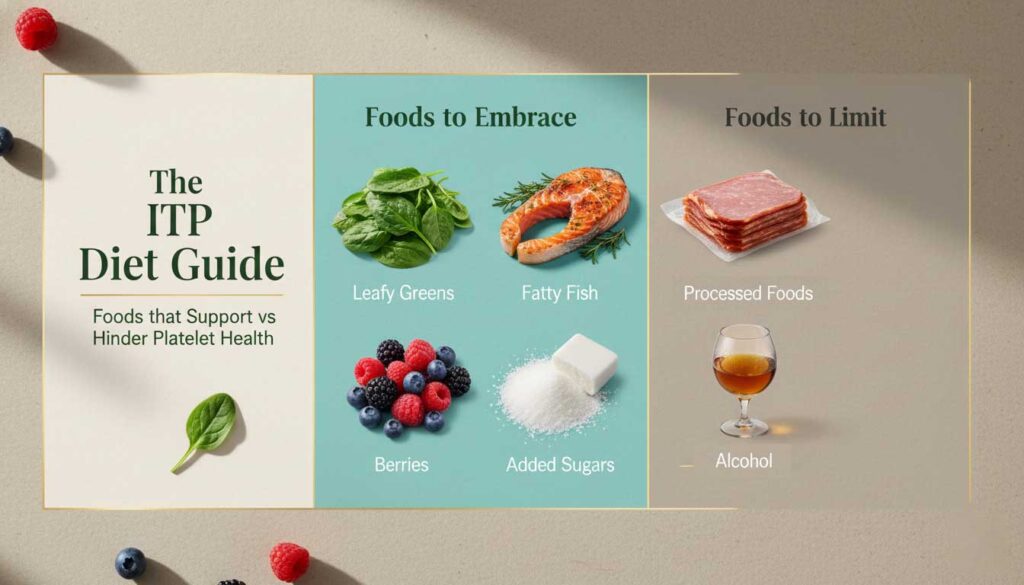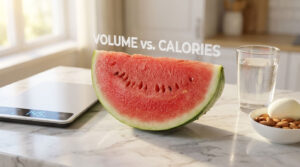Receiving a diagnosis of Immune Thrombocytopenia (ITP) can feel overwhelming. Navigating the world of fluctuating platelet counts, mysterious bruises, and persistent fatigue brings a unique set of challenges. While medical treatments are the primary line of defense, a powerful and empowering tool is waiting right in your kitchen.
Table of Contents
ITP is an autoimmune disorder where your body’s own defense system mistakenly attacks and destroys your platelets—the tiny cell fragments essential for blood clotting. While there is no magical cure, a well-structured ITP diet can be a critical component of your overall management strategy. This supportive nutritional approach can help manage symptoms, reduce inflammation, and improve your quality of life.
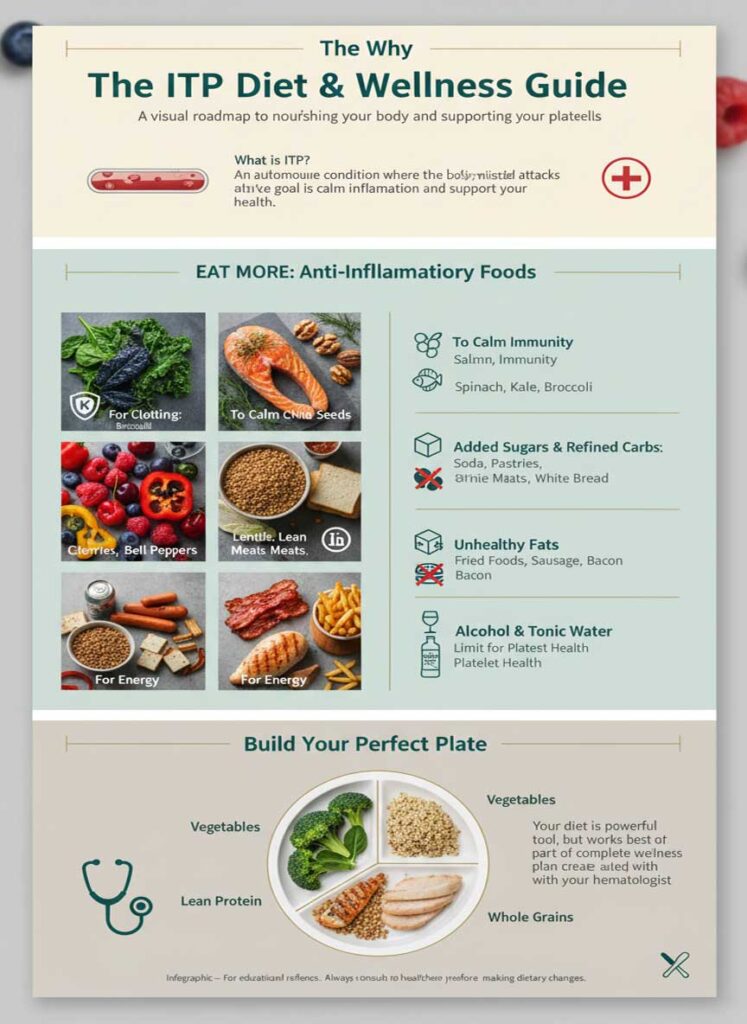
This comprehensive ITP food guide will walk you through the core principles of an effective immune thrombocytopenia diet. We will explore the science-backed connection between nutrition and autoimmunity, detail which foods can help and which may hinder your progress, and provide a practical framework to help you build a sustainable and beneficial ITP diet plan.

Medical Disclaimer: The information in this article is for educational purposes only and is not intended as a substitute for professional medical advice. Always consult with a qualified healthcare provider or a registered dietitian before making any significant dietary changes, especially when managing a condition like ITP.
Understanding ITP: The Critical Link Between Your Immune System and Your Platelets
To truly appreciate the power of an ITP diet, it’s essential to first understand what’s happening inside your body. Grasping this connection is the first step toward using nutrition as a supportive therapy.
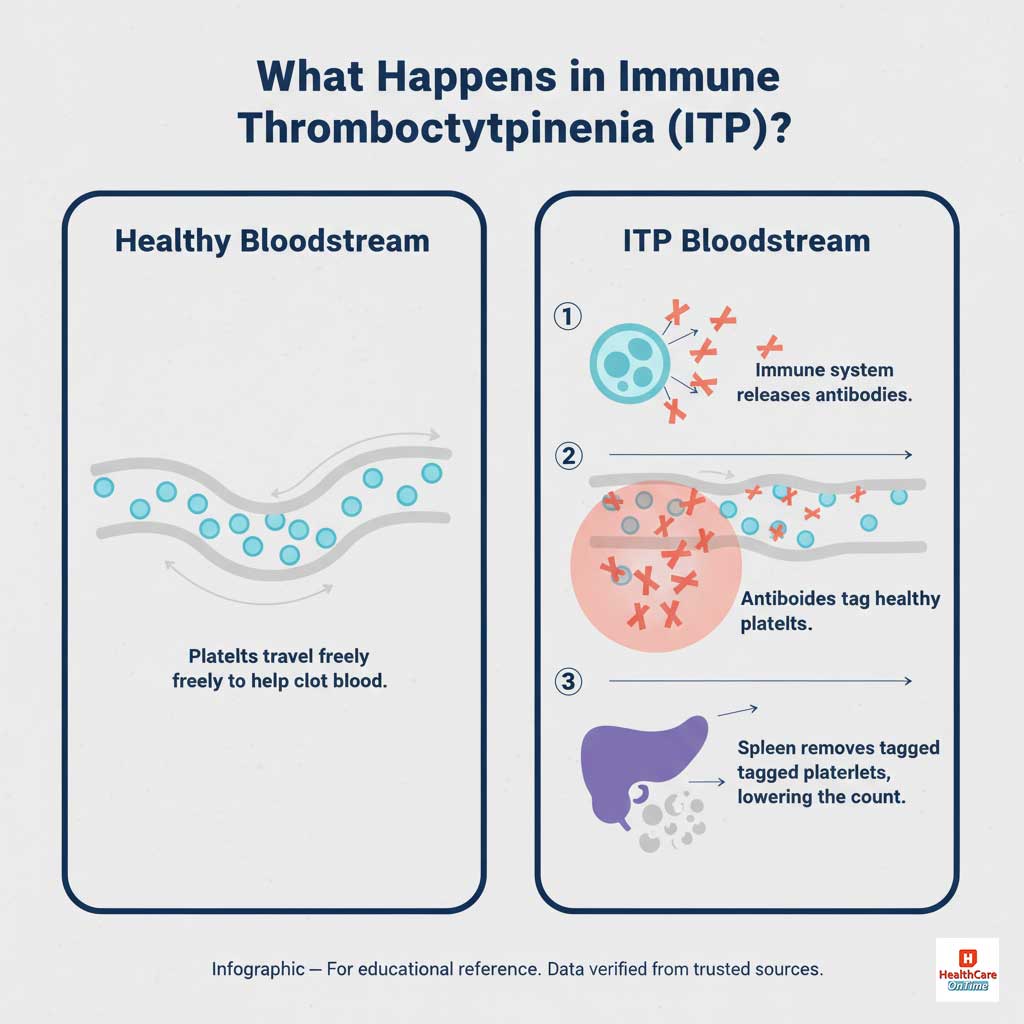
What is Immune Thrombocytopenia (ITP)? A Clear Definition
Immune Thrombocytopenia is an autoimmune disorder. In simple terms, your immune system, which is designed to fight off infections, becomes confused. It misidentifies your own healthy platelets as foreign invaders and creates antibodies to attack and eliminate them in the spleen.
This leads to a lower-than-normal number of platelets in your blood, a condition called thrombocytopenia. With fewer platelets available, your blood doesn’t clot as effectively, leading to the classic symptoms of ITP:
- Easy or excessive bruising (purpura).
- Pinpoint-sized reddish-purple spots on the skin, often on the lower legs (petechiae).
- Bleeding from the gums or nose.
- In women, unusually heavy menstrual flows.
- Profound and persistent fatigue.
According to the National Organization for Rare Disorders (NORD), ITP affects an estimated 9.5 per 100,000 adults annually in the United States. While it’s considered a rare disease, its impact on an individual’s life can be significant, which is why a holistic management approach that includes an ITP and nutrition plan is so important.
Why Diet Matters in an Autoimmune Condition like ITP
At its core, ITP is driven by a dysregulated immune response and inflammation. This is where your diet becomes a powerful ally. The food you eat can either fuel inflammation or help to calm it down. The central goal of any effective autoimmune diet, including an immune thrombocytopenia diet, is to lower systemic inflammation.
The connection often begins in the gut, which houses over 70% of your immune system. An unhealthy gut lining can allow particles to enter the bloodstream, triggering an immune response. A diet rich in whole, anti-inflammatory foods helps support a healthy gut barrier, which in turn can lead to a more balanced immune system.
It’s crucial to remember that a thrombocytopenia diet is not a cure. Instead, it’s a complementary strategy that works alongside medical treatments. By providing your body with the right nutrients, you can help manage fatigue, support healthy blood cell function, and create an internal environment that is less prone to inflammatory flare-ups.
The Ultimate ITP Food Guide: 50+ Foods to Incorporate Into Your Diet

Building a beneficial ITP diet plan starts with focusing on what you can eat. This list of foods for ITP is designed to be abundant and empowering, focusing on nutrient-dense options that support your body’s needs. Incorporating these items into your daily routine is a key step in creating a healthy low platelet count diet.
Pillar 1: Vitamin K-Rich Foods to Support Blood Clotting
Vitamin K does not increase your platelet count. Its vital role is in producing prothrombin and other proteins that are essential for blood clotting. This means it helps the platelets you do have work more effectively, which is critical for anyone with ITP.
Top Foods Rich in Vitamin K for ITP:
- Leafy Greens: Kale, spinach, collard greens, Swiss chard, and turnip greens are nutritional powerhouses.
- Cruciferous Vegetables: Broccoli, Brussels sprouts, and cabbage are excellent sources.
- Herbs: Fresh parsley can be a great addition to salads and sauces.
Actionable Tip: Gently steaming leafy greens can make the Vitamin K more bioavailable. Try adding a cup of steamed spinach to your dinner plate or blending fresh kale into a fruit smoothie to easily boost your intake.
Pillar 2: Anti-Inflammatory Foods to Calm the Immune System
Since inflammation is a key driver of ITP, loading your plate with anti-inflammatory foods is one of the most effective strategies for your ITP diet.
Omega-3 Fatty Acids
These healthy fats are renowned for their ability to reduce the production of inflammatory substances in the body.
- Fatty Fish: Salmon, mackerel, herring, and sardines are among the best sources. Aim for two servings per week.
- Nuts and Seeds: Walnuts, flaxseeds (ground), and chia seeds are excellent plant-based sources.
Antioxidant-Rich Fruits & Vegetables
Antioxidants combat oxidative stress, a form of cellular damage that contributes to inflammation. The more colorful your plate, the better.
- Berries: Blueberries, strawberries, raspberries, and blackberries are packed with antioxidants.
- Deeply Pigmented Fruits: Cherries, pomegranates, and oranges.
- Colorful Vegetables: Bell peppers, sweet potatoes, and carrots.
- Spices: Turmeric contains curcumin, a potent anti-inflammatory compound.
Research Insight: Studies consistently show that diets rich in omega-3s and antioxidants are linked to lower levels of inflammatory markers in the blood, making them a cornerstone of any autoimmune diet.
Pillar 3: Iron-Rich Foods to Fight ITP-Related Fatigue
Fatigue is one of the most common and debilitating symptoms of ITP. While sometimes related to the condition itself, it can be worsened by iron-deficiency anemia, which can occur from chronic, low-level blood loss.
- Heme Iron (more easily absorbed):
- Lean red meat (in moderation)
- Poultry (dark meat)
- Oysters and clams
- Non-Heme Iron (plant-based):
- Lentils, chickpeas, and beans
- Tofu and edamame
- Spinach and kale
- Fortified whole-grain cereals
Actionable Tip: To significantly boost your body’s absorption of plant-based iron, pair it with a source of Vitamin C. For example, squeeze a lemon over your lentil soup or add bell peppers to a tofu stir-fry.
Pillar 4: Folate (Vitamin B9) and Vitamin B12 for Healthy Blood Cell Formation
These B vitamins are crucial for the healthy production of all blood cells, including platelets, within the bone marrow. A deficiency can impact your body’s ability to create new, healthy cells.
- Folate Sources:
- Lentils and beans
- Asparagus and broccoli
- Avocado
- Leafy greens
- Vitamin B12 Sources:
- Lean meats and fish
- Eggs and dairy products
- Fortified nutritional yeast (a great option for vegans)
A well-rounded low platelet count diet will naturally include many of these foods, supporting your body from the ground up.
Foods to Avoid With ITP: A List of Potential Triggers and Inflammatory Items
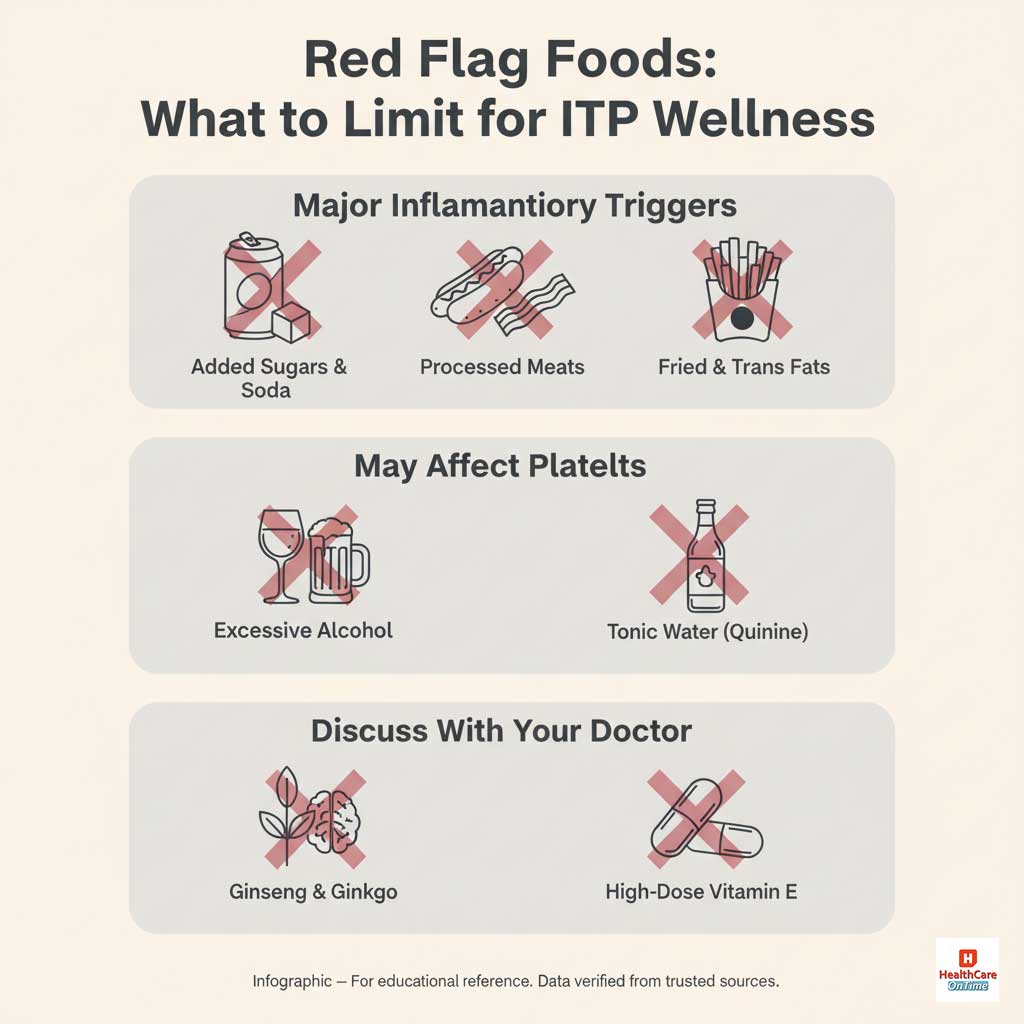
Knowing what to eat with ITP is only half the equation. Understanding the foods to avoid with ITP is equally important for managing your condition. Limiting or eliminating these items can help reduce your body’s inflammatory load and prevent potential complications.
Key Inflammatory Foods to Minimize
These foods can promote inflammation, work against your health goals, and offer little nutritional value. They are the first things to address when building your ITP diet.
- Added Sugars & Refined Carbohydrates: These cause rapid spikes in blood sugar and can trigger the release of inflammatory messengers.
- Examples: Soda, candy, pastries, cookies, white bread, white pasta, and sugary breakfast cereals.
- Unhealthy Trans and Saturated Fats: These fats are directly linked to increased inflammation.
- Examples: Fried foods (French fries, doughnuts), processed meats (bacon, sausage, hot dogs), and many commercially baked goods and margarines made with hydrogenated oils.
The World Health Organization recommends limiting these food groups not just for ITP, but for overall health and disease prevention.
Alcohol and Tonic Water (Quinine): A Special Caution for ITP
When considering what foods to avoid with immune thrombocytopenic purpura, beverages are a key consideration.
- Alcohol: Excessive alcohol consumption can suppress bone marrow function, which is where platelets are made. It can also interfere with platelet function and increase your risk of bleeding. It is best to limit alcohol or avoid it altogether.
- Tonic Water (Quinine): Quinine is a compound that, in some sensitive individuals, can cause a drastic drop in platelets (drug-induced thrombocytopenia). While the amount in tonic water is small, many hematologists recommend that ITP patients avoid it as a precaution.
Supplements and “Health Foods” That May Affect Platelets
This is a nuanced area of an ITP diet. While many of these items are healthy, they possess mild blood-thinning properties that could theoretically increase bleeding risk in someone with a very low platelet count.
- Supplements to Discuss with Your Doctor: High-dose Vitamin E, Ginkgo Biloba, and Ginseng. A medical journal reported a case of ITP being caused by a supplement containing ginseng, highlighting the need for caution.
- Foods to Consume in Moderation: Be mindful of consuming highly concentrated amounts of garlic, ginger, and cranberry juice, as they may affect clotting.
This doesn’t mean you can never have ginger in your stir-fry; it simply means avoiding high-dose supplements or large, concentrated quantities without medical guidance. This is a key part of personalizing your thrombocytopenia diet.
Comparison Table: Building Your ITP Diet Plate at a Glance

Navigating an ITP diet can feel complex, but this table breaks it down into simple choices. Use this as a quick reference when planning meals or grocery shopping. This is a core part of a practical ITP diet plan.
| Food Category | ✅ Foods to Eat Freely | ⚠️ Foods to Eat in Moderation | ❌ Foods to Limit or Avoid |
| Vegetables | Spinach, Kale, Broccoli, Bell Peppers, Carrots | Potatoes, Corn | French Fries, Creamed Vegetables |
| Fruits | Berries, Cherries, Apples, Oranges | Fruit Juices (100% juice, unsweetened) | Fruit Juices with Added Sugar, Canned Fruit in Syrup |
| Proteins | Salmon, Chicken Breast, Lentils, Beans, Tofu | Lean Red Meat, Low-Fat Dairy | Processed Meats (Sausage, Bacon), Fried Chicken |
| Fats & Oils | Olive Oil, Avocado, Walnuts, Flaxseeds | Butter, Coconut Oil | Margarine with Trans Fats, Hydrogenated Oils |
| Grains | Quinoa, Brown Rice, Oats, Whole Wheat Bread | White Rice, White Pasta | Sugary Cereals, Pastries, Doughnuts |
| Drinks | Water, Herbal Tea, Green Tea | Coffee, 100% Unsweetened Cranberry Juice | Soda, Alcohol, Tonic Water, Energy Drinks |
Practical Strategies for Implementing the ITP Diet Plan
Knowledge is only powerful when put into action. Here are practical ways to integrate the principles of the immune thrombocytopenia diet into your daily life.
Creating a Sample Meal Plan for ITP Patients

Seeing what a full day of eating looks like can make the ITP diet plan feel much more achievable. Here is a simple, anti-inflammatory meal plan to get you started.
| Meal | Example Meal | Key Nutrients Provided |
| Breakfast | Oatmeal cooked with water or unsweetened milk, topped with a handful of blueberries and chopped walnuts. | Fiber, Antioxidants, Omega-3s |
| Lunch | A large salad with a base of spinach, topped with grilled salmon, cherry tomatoes, cucumber, and an olive oil vinaigrette. | Vitamin K, Protein, Omega-3s, Healthy Fats |
| Dinner | Hearty lentil soup made with carrots and celery, served with a side of whole-grain toast topped with avocado. | Iron, Folate, Fiber, Healthy Fats |
| Snack | An apple with a tablespoon of natural almond butter. | Fiber, Protein, Healthy Fats |
Reading Nutrition Labels: What to Look For
Becoming a savvy label-reader is a crucial skill. Look past the marketing claims on the front of the box and check the ingredients list for:
- Hidden Sugars: Words like high-fructose corn syrup, dextrose, sucrose, and cane juice.
- Trans Fats: Look for “partially hydrogenated oil” in the ingredients list.
- Excessive Sodium: High sodium can contribute to inflammation and other health issues.
The Holistic Approach: Managing ITP Beyond the Plate
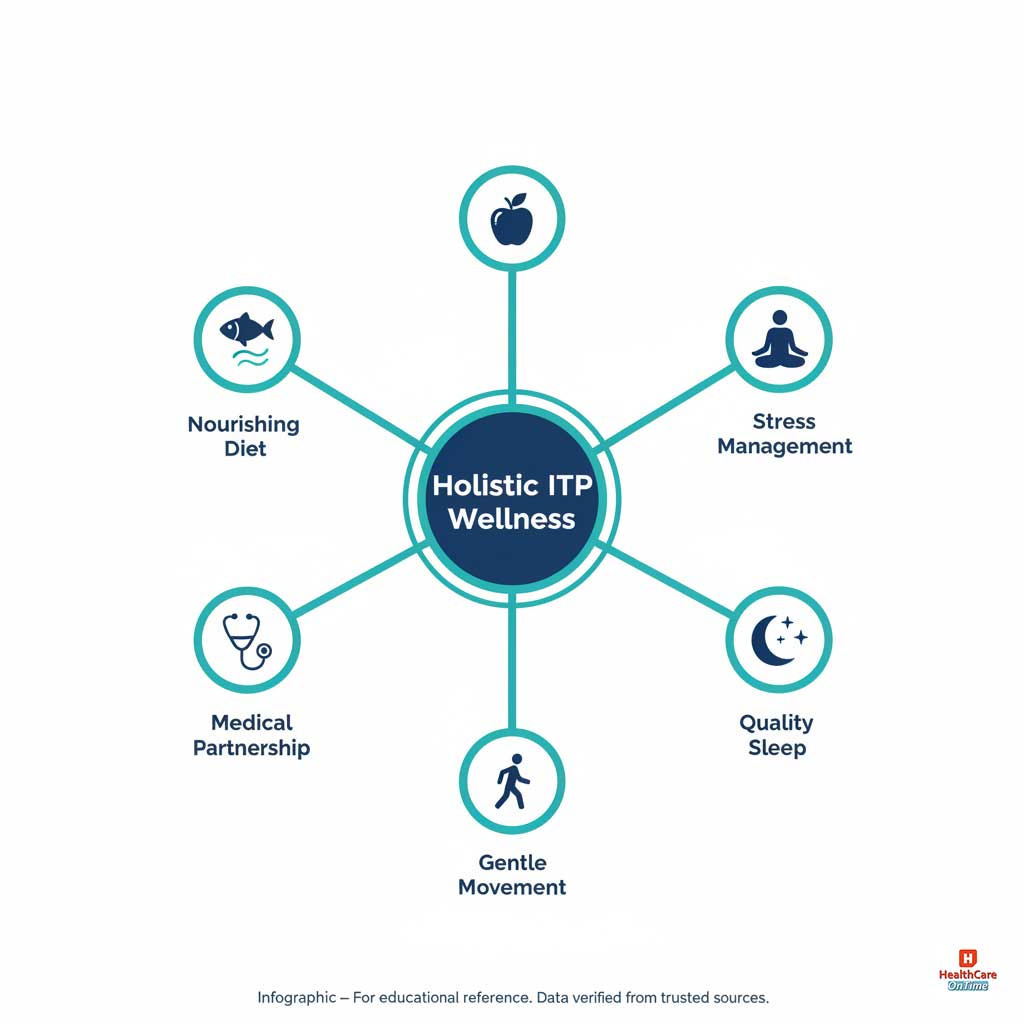
An effective approach to ITP management goes beyond just food. Consider these other pillars of wellness:
- Stress Management: Chronic stress elevates cortisol, a hormone that can drive inflammation. Practices like meditation, deep breathing, or gentle yoga can be beneficial.
- Adequate Sleep: Aim for 7-9 hours of quality sleep per night. Sleep is when your body repairs itself and regulates the immune system.
- Gentle Exercise: Activities like walking or swimming can help fight fatigue and reduce inflammation.
Many ITP diet success stories come from individuals who adopt this holistic view. The Platelet Disorder Support Association (PDSA) found in a survey that 40% of ITP patients reported improved symptoms after adopting dietary changes, reinforcing that a comprehensive approach can yield powerful results.
Summary & Key Takeaways: Your Path Forward with an ITP Diet
Navigating life with ITP requires a proactive approach, and your diet is one of the most significant factors you can control. The primary goal of an ITP diet is not to cure the disease but to create an internal environment that supports your body, reduces the inflammatory burden on your immune system, and helps you feel your best.
Remember to focus on adding nourishing, whole foods to your plate. Prioritize leafy greens, colorful fruits and vegetables, and healthy omega-3 fats. Be equally diligent about limiting processed foods, added sugars, and alcohol. This comprehensive ITP food guide is your starting point.
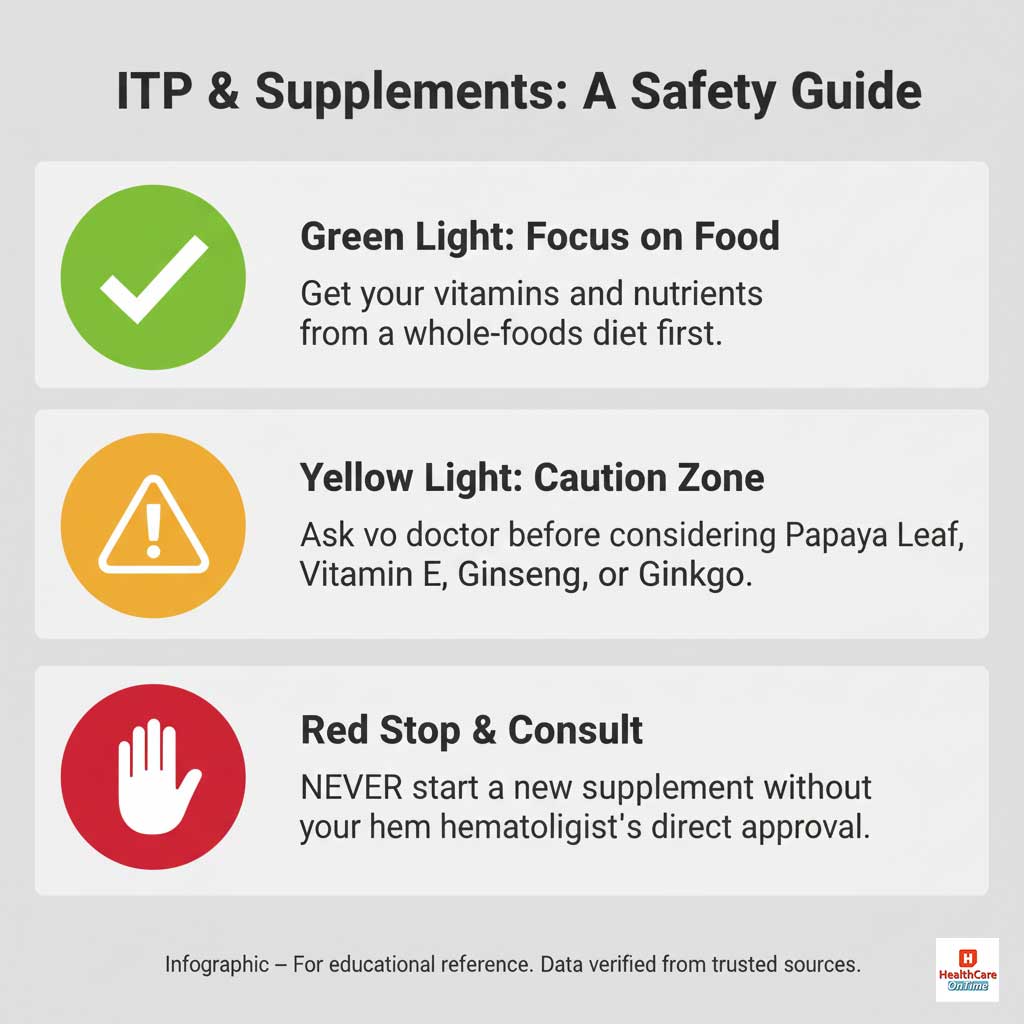
The most successful low platelet count diet is one that is both sustainable and personalized. Use this information to start a productive conversation with your hematologist and a registered dietitian. Together, you can craft the best diet for ITP patients like you—one that is safe, effective, and empowers you on your journey to better health.
Frequently Asked Questions (FAQ) About the ITP Diet
What is the best diet for ITP?
There isn’t a single “best” diet, but the most recommended approach is an anti-inflammatory, whole-foods diet. It should be rich in Vitamin K (leafy greens), antioxidants (berries, colorful vegetables), lean proteins (fish, lentils), and healthy fats (avocado, walnuts), and personalized to your specific health needs.
What is the fastest way to increase platelets naturally with diet?
Dietary changes support platelet health gradually over time; there is no instant dietary fix. Nutrients like folate and iron are crucial for the production of healthy blood cells. The fastest way to increase platelets during a significant drop is always through medical treatments prescribed by your doctor.
Can I drink coffee or green tea with ITP?
Yes, in moderation, coffee and green tea are generally considered safe for people with ITP. Green tea, in particular, is a great source of antioxidants, which can help combat inflammation.
Has anyone had success with raising platelet counts with diet?
Yes, many individuals in the ITP community report positive outcomes. While diet alone may not dramatically raise counts for everyone, many share ITP diet success stories about achieving more stable counts, having more energy, and experiencing fewer bruising and bleeding symptoms.
Should I avoid gluten or dairy if I have ITP?
There is no universal medical recommendation for all ITP patients to avoid gluten or dairy. However, if you have a known sensitivity, intolerance, or allergy (like celiac disease or lactose intolerance), you must avoid them. Some people find that eliminating them reduces their overall inflammation, but this should be tested under medical supervision.
Can papaya leaf extract help ITP?
Some small studies suggest papaya leaf extract may help increase platelet counts, and it’s often discussed as one of the natural remedies for ITP. However, the research is not robust enough for it to be a standard medical recommendation. You must consult your hematologist before trying it, as it can interact with medications.
How does the ITP diet interact with medications like prednisone?
A thoughtful ITP diet is very important when on steroids like prednisone. A diet low in refined sugars and sodium can help manage side effects like high blood sugar and water retention. It is also vital to ensure you get enough calcium and Vitamin D to protect your bone health.
What are some good snack ideas for an ITP diet?
Great anti-inflammatory snacks include a handful of walnuts, an apple with almond butter, plain Greek yogurt topped with berries, raw carrots and bell peppers with hummus, or a hard-boiled egg.
Can diet affect ITP?
Absolutely. While diet cannot cure ITP, it can significantly affect your symptoms and quality of life. A pro-inflammatory diet can worsen fatigue and potentially exacerbate the autoimmune response, while an anti-inflammatory ITP diet can be a powerful supportive tool.
What is the best food for low platelet count?
Instead of one single “best food,” focus on a pattern of eating. The best foods for a low platelet count diet are those rich in nutrients that support overall blood health: leafy greens (Vitamin K), lean proteins (iron, B12), and legumes (folate).
How to increase platelet count naturally with diet?
A consistent intake of foods rich in folate, iron, and Vitamin B12 provides your bone marrow with the building blocks for blood cell production. Combining this with an anti-inflammatory diet creates the optimal environment for your body to function at its best, which is the cornerstone of any increase platelets diet.
Is there a difference between an ITP diet and a general thrombocytopenia diet?
The core principles are very similar. Any thrombocytopenia diet aims to support the body’s ability to produce platelets and ensure proper blood clotting. However, an ITP diet has an added focus on calming the autoimmune and inflammatory response that is specific to Immune Thrombocytopenia.

